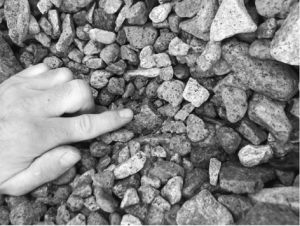Best shore spawner kokanee return since 1970s left high and dry
August 18, 2021
B.C.’s provincial government appears to have mistimed the spring drawdown of Okanagan Lake, seriously undermining a 28-year effort to recover local kokanee salmon populations.
Efforts to recover the kokanee had just begun to pay off, with 316,000 shore-spawning fish returning in 2020, the highest rate since the 1970s and 214% of the ten-year average.
With snowpacks above normal, the ministry began to lower the level of the lake in February in anticipation of a substantial spring freshet in order to mitigate the risk of flooding properties that surround the lake.
But early in March, government biologists and First Nations partners became concerned that the annual drawdown was prematurely exposing shoreline spawning areas, stranding unhatched kokanee eggs and immature fry, according to documents released under the Freedom of Information and Protection of Privacy Act.
The Okanagan Nation Alliance warned the government that the predicted final emergence date for kokanee fry was “too early.” But a government consultant advised that “the correct 100% emergence prediction for kokanee this year is March 12, 2021.”
It soon became clear that the predictive model was flawed.
Sampling in the field showed kokanee fry were not as mature as anticipated, they could not swim freely and “therefore significant numbers would be stranded by further lake level drops.”
An excavation of shoreline gravel led by a government biologist found mainly dead eggs in the 25-cm vertical drawdown zone. “The majority of kokanee observed were still in egg stage and deceased,” the report concluded.

Dead kokanee egg attached to gravel (pictured above)
A summary report by a senior field biologist notes that 75% of the kokanee eggs and fry in the survey area were dead. The report speculates that the late winter drawdown of Okanagan Lake had a direct impact on kokanee shore spawning egg development and survival, adding “the scale of the impact is unclear.”
The government and conservation partners have spent decades trying to recover habitat and boost dwindling kokanee, which are a foundational species in the lake ecosystem. “Since the Okanagan Lake kokanee population crash of the mid-1990s First Nations, local conservation groups, and regional fisheries staff have spent millions of dollars and countless volunteer hours in a concerted effort to rebuild these important fish. By drying these eggs up we may have just set ourselves back decades,” said Patrick Whittingham, Okanagan Region president for the B.C. Wildlife Federation.
The decision to lower the lake levels is based on science which clearly isn’t working with our changing climate.
“The problem is that the government’s inflow water modelling tools are not able to keep up with the effects of climate change on runoff and the lake itself,” said Jesse Zeman, director of the Fish and Wildlife Restoration Program for the B.C. Wildlife Federation.
Holding the water level high in the spring increases the risk of flooding, because the water release infrastructure isn’t adequate to manage water levels on a day-to-day basis, he noted. A large release of water downstream of Penticton can also negatively impact sockeye fry which emerge in the Okanagan River.
The Penticton Dam can only lower the lake’s level by about one and three quarter centimeters per day and with climate change spring runoff can raise the lake’s level as many as 7-8 centimeters.
“The interim solution for the kokanee is to draw down the lake before October, so that spawners lay their eggs further down the shoreline,” he said. “In the short-term, B.C. needs a watershed security fund and strategy to deal with the earlier and more intense spring runoff followed by the dry summers we’re currently experiencing. In the long-term Okanagan valley homes and buildings are going to have to be built or moved further from the lake and stream edges so that these unprecedented runoff and drought cycles do not continue to flood people’s property.”
“That sounds like a radical solution, I know, but the climate is changing and we have to adapt to a new reality,” he said.
For more information contact: Jesse Zeman, Director of Fish and Wildlife Restoration, BC Wildlife Federation, (250) 878-3799, jessezeman@gmail.com
To view a copy of the Freedom of Information release of records see: https://www.dropbox.com/sh/v1bjfmtyi26t9no/AABnT_ueMK3PBHsyabWWUj46a?dl=0
